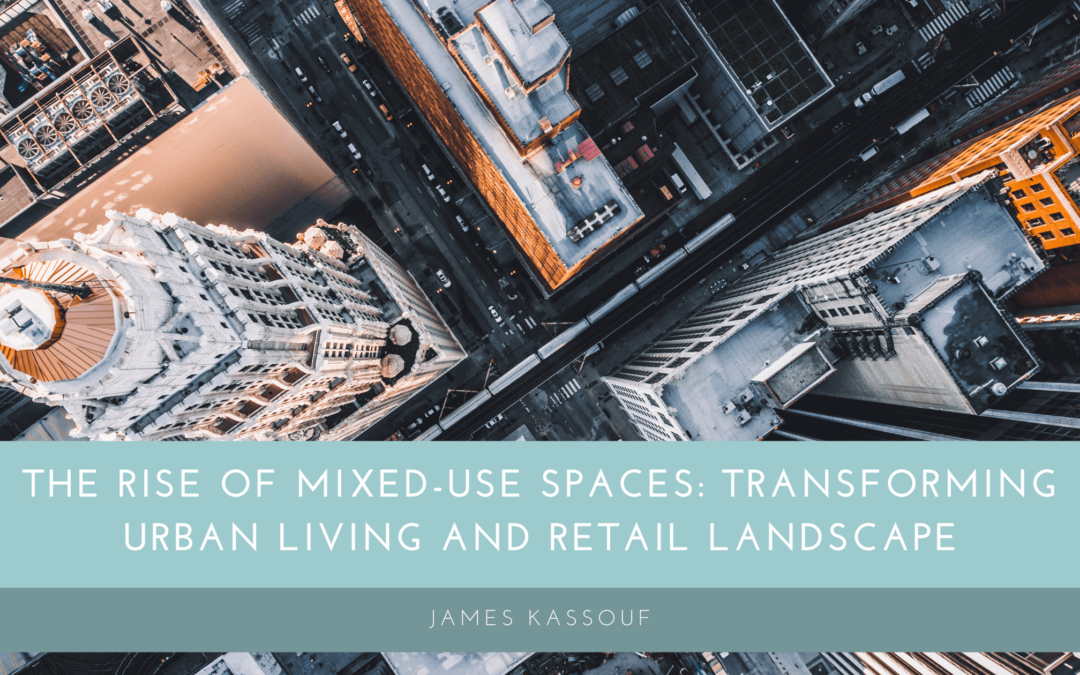In recent years, urban living has witnessed a fascinating transformation, and a significant catalyst behind this change has been the rise of mixed-use spaces. Gone are the days of sprawling single-purpose developments; instead, cities worldwide are embracing the concept of blending residential, commercial, and recreational elements into cohesive and vibrant neighborhoods. This phenomenon has redefined how we live, work, and shop and revitalized the retail landscape, creating a thriving urban experience like never before.
The Birth of Mixed-Use Spaces: A Response to Urban Challenges
The genesis of mixed-use spaces can be traced back to the increasing challenges cities face in accommodating growing populations and addressing the issues of urban sprawl. Traditional city planning often segregated residential areas from commercial and recreational spaces, leading to long commutes, traffic congestion, and the loss of community cohesion. Recognizing the need for sustainable urban development, architects and city planners began exploring innovative solutions to foster community, reduce commuting distances, and encourage more sustainable living.
The Integration of Living, Working, and Playing
Mixed-use spaces seek to create vibrant urban environments by seamlessly integrating diverse elements within a compact area. These spaces typically combine residential units with offices, retail establishments, restaurants, entertainment venues, and green spaces. The goal is to foster a sense of community where residents can live, work, and socialize in close proximity, promoting a walkable lifestyle and reducing the dependence on cars.
For example, a mixed-use development might have apartments or condominiums on the upper floors, offices on the middle floors, and retail stores and restaurants on the ground floor. This vertical integration optimizes land usage and ensures that the space remains active throughout the day and night, enhancing safety and economic activity.
Transforming the Retail Landscape
Mixed-use spaces have redefined the retail landscape in several ways. Traditionally, retail centers were standalone entities, usually located in suburban areas and accessed primarily by cars. In contrast, mixed-use developments bring retail establishments directly to the doorstep of residents and office workers, creating a captive audience for businesses. This proximity enhances foot traffic and customer engagement, driving higher retail sales.
Furthermore, mixed-use spaces offer small businesses and local entrepreneurs a unique opportunity. The diversity of residents and workers in these areas fosters a more receptive audience for niche and specialized products and services, encouraging a thriving ecosystem of local businesses. As a result, mixed-use developments contribute to the revival of local economies and strengthen the fabric of the community.
Creating Vibrant Social Hubs
One of the most significant advantages of mixed-use spaces is their ability to create vibrant social hubs. Combining various functions into a single area makes these developments lively and dynamic places where people gather, interact, and build connections. Public spaces like parks, plazas, and community centers in mixed-use developments become natural meeting points, fostering a strong sense of community identity.
These spaces also encourage a more active and healthy lifestyle. With amenities like gyms, yoga studios, and recreational areas readily accessible, residents are more likely to engage in physical activities and embrace a balanced lifestyle. Additionally, the availability of diverse dining options, cultural venues, and entertainment options adds to the richness of the urban experience, making mixed-use spaces attractive to a wide demographic.
The Future of Urban Living
The rise of mixed-use spaces marks a significant shift in how we envision and design our cities. As urban populations continue to grow, sustainable and people-centric developments become imperative. The success of mixed-use spaces in revitalizing urban living and transforming the retail landscape is a testament to this approach’s effectiveness.
In the future, we expect to see more cities embracing the mixed-use model, integrating diverse functions to create cohesive and sustainable urban environments. This evolution will shape how we live and work and contribute to a more connected, vibrant, and inclusive society. As mixed-use spaces become the new norm, we will witness a renaissance in urban living that prioritizes community, sustainability, and quality of life.

